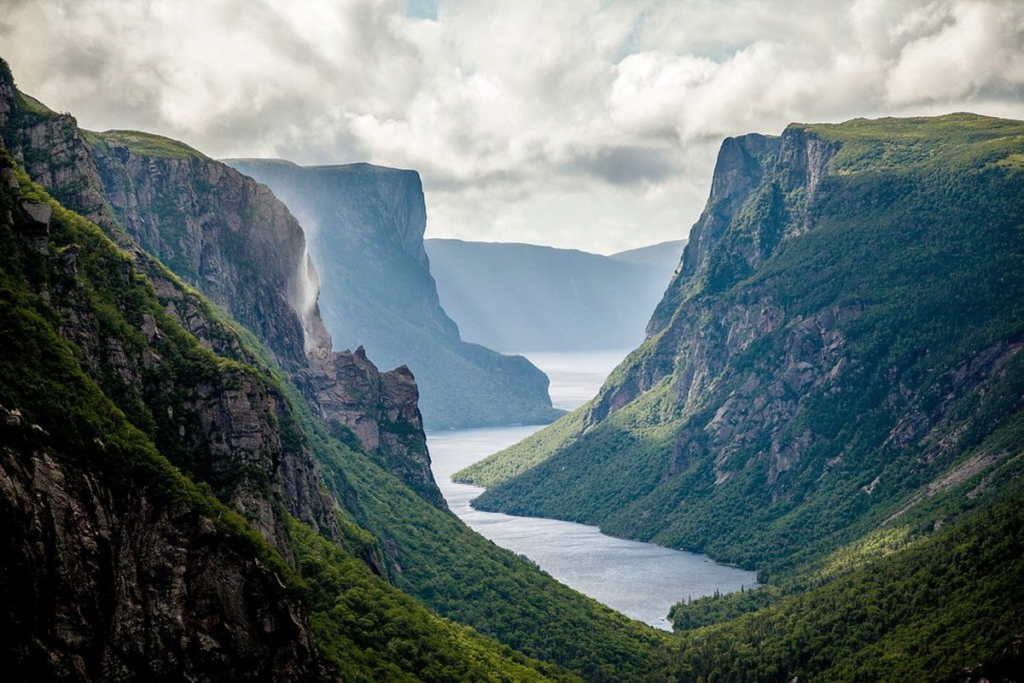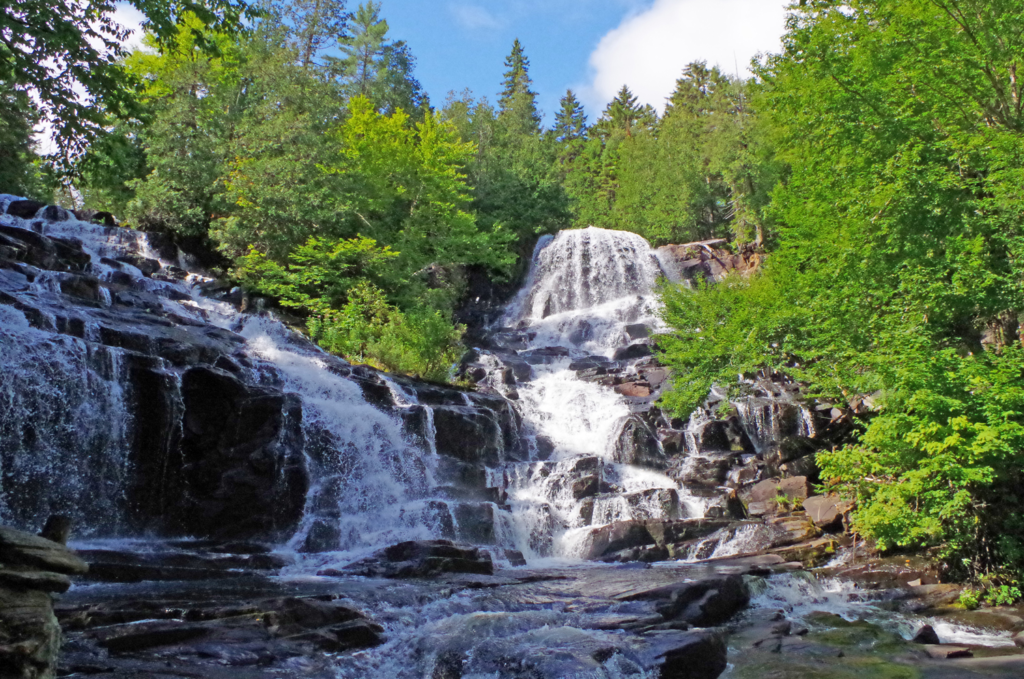The Trans-Canada Highway, a legendary network of roads spanning over 4,800 miles from the Atlantic to the Pacific, offers travelers an unparalleled opportunity to experience the vast and diverse landscapes of Canada. Embarking on a road trip along this iconic route in an RV is a dream come true for adventure seekers, nature enthusiasts, and those looking to immerse themselves in the beauty of the Great White North In this comprehensive guide, we’ll take you through the highlights, best times to visit, key stops, route details, and places to stay with a camper van along the Trans-Canada Highway.
Highlights of the Trans-Canada Highway Journey
1. Coastal Wonders in Newfoundland and Labrador
Begin your Trans-Canada Highway adventure in St. John’s, Newfoundland and Labrador, the easternmost point in North America. Here, you’ll encounter rugged coastlines, dramatic cliffs, and picturesque fishing villages. Don’t miss the opportunity to explore Gros Morne National Park, a UNESCO World Heritage Site, where you can hike through otherworldly landscapes and cruise the dramatic fjords.

2. Lush Forests and Clear Lakes in Quebec
Heading west, you’ll enter Quebec, Canada’s predominantly French-speaking province. The highway will take you through vast forests, where you can witness the stunning fall foliage if you visit in autumn. The Mauricie National Park is an excellent stop for hiking, canoeing, and enjoying the tranquility of pristine lakes.

Link: Mauricie National Park
3. The Dynamic City of Montreal
Montreal, a vibrant and multicultural city, is a must-visit along your journey. Explore the historic Old Montreal, savor the city’s renowned culinary scene, and immerse yourself in its arts and culture. Be sure to stop by Mount Royal Park for panoramic views of the city.
Link: Montreal Tourism
4. Ontario’s Natural Beauty
As you cross into Ontario, you’ll be greeted by the mesmerizing landscapes of the Canadian Shield. Pukaskwa National Park offers breathtaking views of Lake Superior and rugged coastal terrain, making it a prime spot for hiking and camping.
Link: Pukaskwa National Park
5. Winnipeg: Where Prairies Meet the North
Continuing westward, you’ll reach Winnipeg, Manitoba’s capital. Explore the city’s rich Indigenous culture, visit the Canadian Museum for Human Rights, and take a leisurely stroll through Assiniboine Park. Winnipeg is also a gateway to exploring the northern reaches of Canada.
Link: Canadian Museum for Human Rights
6. The Rugged Beauty of Saskatchewan
Saskatchewan’s rolling plains and striking badlands offer a unique contrast to the previous landscapes. Visit Grasslands National Park to witness bison roaming freely, or delve into the rich history of the Royal Saskatchewan Museum in Regina.
Link: Grasslands National Park
7. Majestic Rockies in Alberta
Reaching the western provinces, you’ll be awestruck by the majestic Rocky Mountains. Banff and Jasper National Parks are absolute gems, with opportunities for hiking, wildlife spotting, and soaking in hot springs. Don’t forget to drive along the Icefields Parkway for some of the most stunning scenery in Canada.
Link: Banff National Park | Jasper National Park
8. The Pacific Coast of British Columbia
Finally, your journey culminates in British Columbia, where the Trans-Canada Highway ends at the Pacific Ocean. Explore the city of Vancouver, go whale watching in Victoria, and discover the serene beauty of Vancouver Island.
Link: Tourism Vancouver | Tourism Victoria
Best Time to Visit the Trans-Canada Highway
The best time to embark on a Trans-Canada Highway road trip depends on your preferences and the experiences you seek. Here’s a breakdown of the seasons:
1. Spring (April to June)
Spring brings the awakening of nature along the highway. This season offers mild weather, blooming wildflowers, and the opportunity to witness migratory birds returning to their nesting grounds. It’s an excellent time for birdwatching and enjoying the renewal of the Canadian landscape.
2. Summer (June to August)
Summer is the peak tourist season along the Trans-Canada Highway. Expect warm temperatures and longer daylight hours, allowing for more outdoor activities. However, popular destinations can be crowded, so plan your accommodations and activities well in advance.
3. Fall (September to October)
Autumn transforms the landscape into a mesmerizing display of vibrant colors as the leaves change. This is a photographer’s dream season, and it’s also ideal for hiking and camping. Be prepared for cooler temperatures as fall progresses.
4. Winter (November to March)
Winter along the Trans-Canada Highway can be challenging due to snow and cold temperatures, especially in the northern regions. However, if you’re an avid winter sports enthusiast, this is the time to visit for skiing, snowboarding, and ice skating.
Keep in mind that weather conditions can vary greatly along the route, so always check the forecast and road conditions before embarking on your journey.
Key Stops Along the Trans-Canada Highway
1. Peggy’s Cove, Nova Scotia
Peggy’s Cove is a picturesque fishing village known for its iconic lighthouse and rocky coastal landscape. Take a stroll around the village, visit the lighthouse, and capture breathtaking photos of the rugged shoreline.
Link: Peggy’s Cove
2. Quebec City, Quebec
Quebec City, a UNESCO World Heritage Site, is a charming and historic city with cobblestone streets, centuries-old architecture, and a rich French influence. Explore Old Quebec, visit the stunning Château Frontenac, and savor delicious French cuisine.
Link: Quebec City Tourism
3. Ottawa, Ontario
Canada’s capital, Ottawa, offers a blend of history, culture, and natural beauty. Visit Parliament Hill, explore national museums, and take a leisurely stroll along the scenic Rideau Canal.
Link: Ottawa Tourism
4. Winnipeg, Manitoba
Winnipeg, located at the geographic center of North America, is a diverse and dynamic city. Discover its cultural richness, explore The Forks historic site, and learn about Indigenous heritage.
Link: Tourism Winnipeg
5. Calgary, Alberta
Calgary is a gateway to the Canadian Rockies and is famous for its annual Calgary Stampede rodeo. Visit the Calgary Tower for panoramic views, and don’t miss the opportunity to explore nearby Banff and Canmore.
Link: Visit Calgary
Route Details: Navigating the Trans-Canada Highway
Navigating the Trans-Canada Highway requires careful planning and an understanding of the route. While the highway itself is continuous, it’s important to be aware of its different segments, road conditions, and potential detours. Here’s an overview of the route:
1. Eastern Segment: St. John’s, Newfoundland to Quebec City, Quebec
The eastern segment takes you through the picturesque landscapes of Newfoundland and Labrador before entering Quebec. The highway is well-maintained, but be prepared for varying weather conditions, especially in Newfoundland.
2. Central Segment: Quebec City, Quebec to Ottawa, Ontario
This section of the Trans-Canada Highway offers a mix of urban and rural experiences. As you pass through Quebec and Ontario, you’ll encounter major cities like Montreal and Ottawa, as well as charming countryside.
3. Prairie Segment: Ottawa, Ontario to Regina, Saskatchewan
The Prairie segment introduces you to the vast Canadian plains, where the highway stretches endlessly across the flat landscape. This part of the journey provides a glimpse into the heart of Canada’s agricultural regions.
4. Rocky Mountain Segment: Regina, Saskatchewan to Vancouver, British Columbia
The final leg of the journey takes you through the breathtaking Rocky Mountains. Be prepared for elevation changes, winding roads, and the stunning beauty of the western provinces.
5. Pacific Coast: Vancouver, British Columbia to Victoria, British Columbia
Upon reaching the Pacific Coast, you’ll have the option to explore Vancouver and Vancouver Island. Ferries are available to take you to Vancouver Island, where you can visit Victoria and experience the island’s natural beauty.
Places to Stay with a Camper Van
One of the advantages of embarking on a Trans-Canada Highway road trip in an RV or camper van is the flexibility it offers when it comes to accommodations. Here are some options for places to stay along the way:
1. Campgrounds and RV Parks
Canada boasts numerous campgrounds and RV parks along the Trans-Canada Highway, providing essential amenities such as electricity, water hookups, and restroom facilities. Many of these campgrounds are situated in beautiful natural settings, allowing you to connect with the great outdoors.
Link: Camping in Canada
2. Provincial and National Parks
Provincial and national parks often offer campgrounds for RVs and camper vans. These parks provide an opportunity to immerse yourself in pristine wilderness while still enjoying basic comforts.
Link: Parks Canada
3. Rest Stops and Wal-Mart
Along the highway, you’ll also find designated rest stops where you can park your RV for a night’s rest. Additionally, some Wal-Mart stores allow overnight parking for RVs, providing a convenient option for budget-conscious travelers.
Link: Wal-Mart RV Parking Policy
4. Campsite Reservations
To ensure you have a spot at your desired campground, consider making reservations in advance, especially during the peak summer season. This guarantees you a place to stay and minimizes stress on the road.
Link: ReserveAmerica
5. Boondocking and Free Camping
For those seeking a more adventurous experience, boondocking or free camping is an option in some areas. Be sure to research local regulations and safety guidelines before choosing this option.
Conclusion
Embarking on a road trip along the Trans-Canada Highway in an RV is a once-in-a-lifetime adventure that offers a diverse range of experiences. From the rugged coastlines of Newfoundland to the majestic Rockies of Alberta, this journey allows you to connect with Canada’s natural beauty and rich culture. Whether you’re a nature lover, history buff, or simply in search of breathtaking vistas, the Trans-Canada Highway has something to offer every traveler.
Plan your trip carefully, choose the best time to visit based on your interests, and be prepared to be amazed by the incredible landscapes and communities you’ll encounter along the way. With the flexibility of an RV, you’ll have the freedom to explore at your own pace and create lasting memories on this epic cross-country adventure. So, pack your bags, hit the open road, and let the Trans-Canada Highway unveil its wonders before you.

